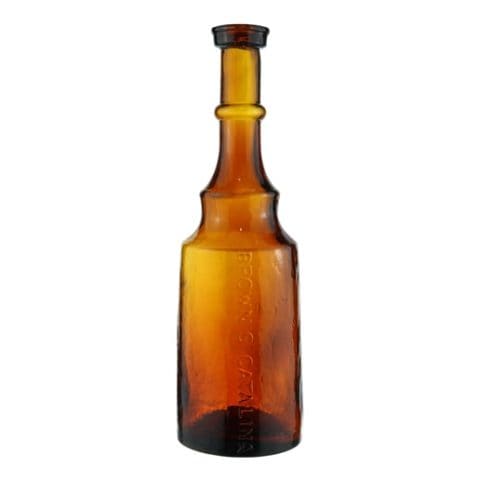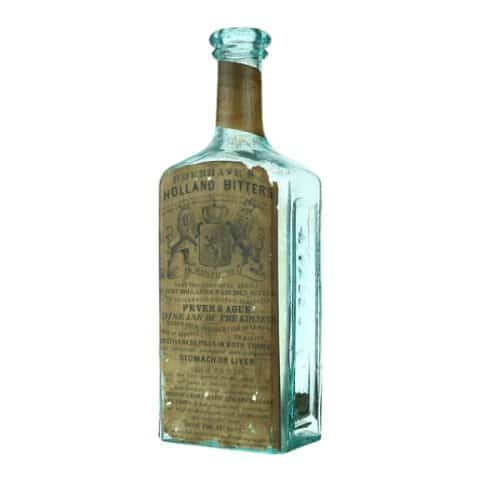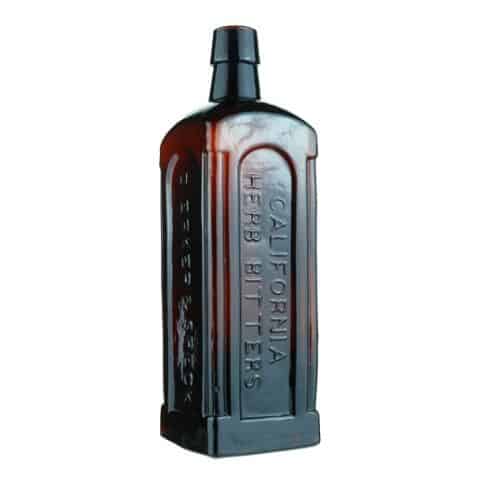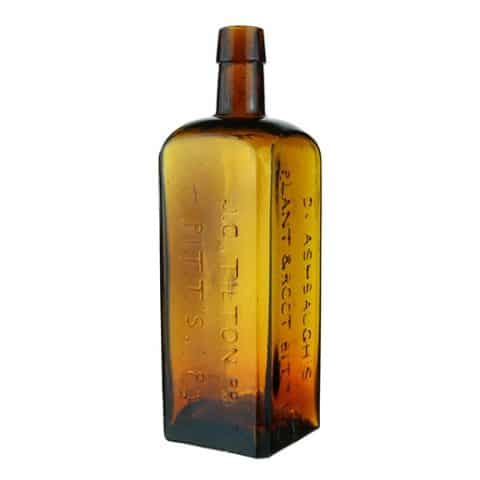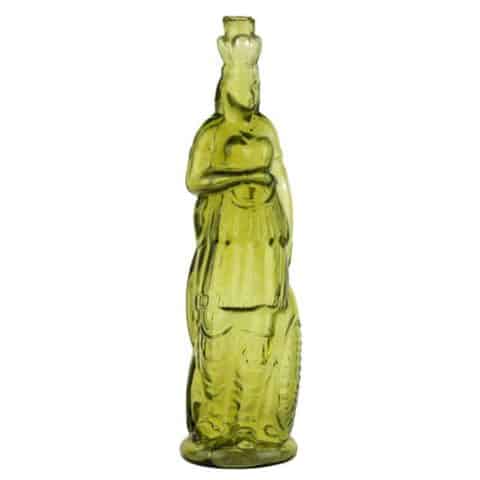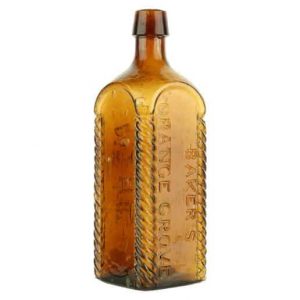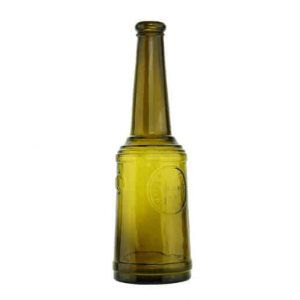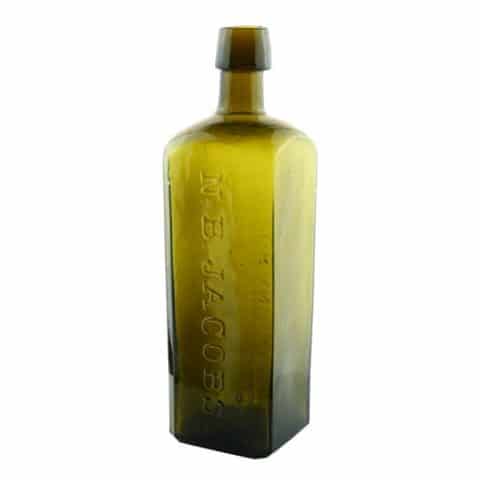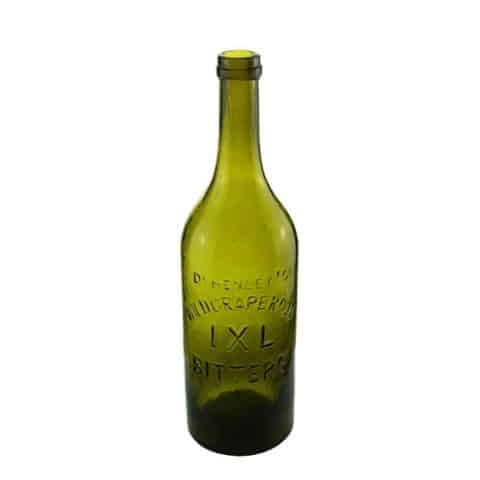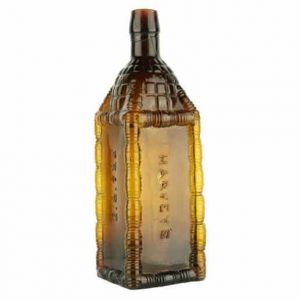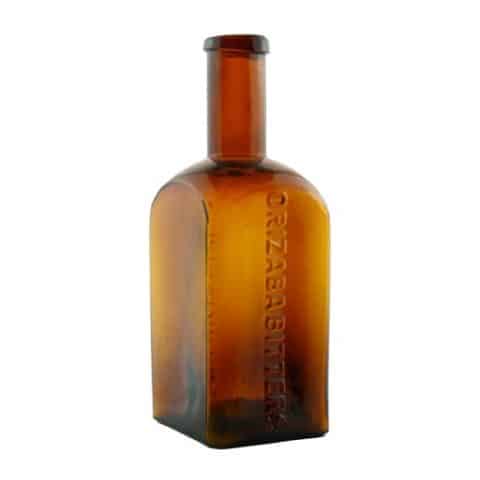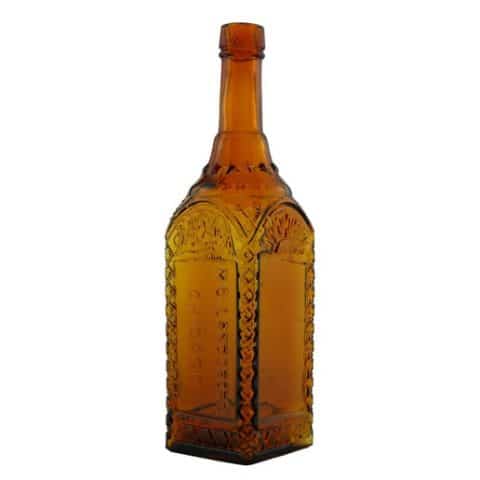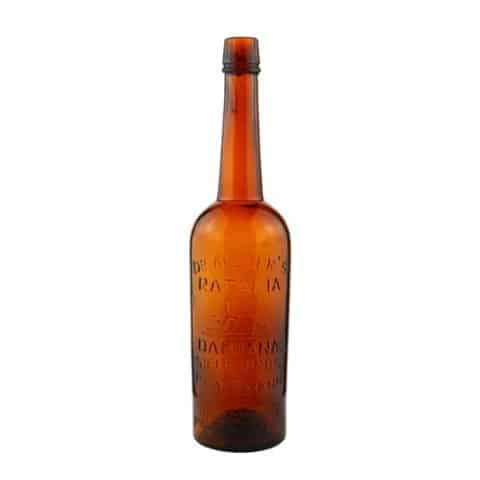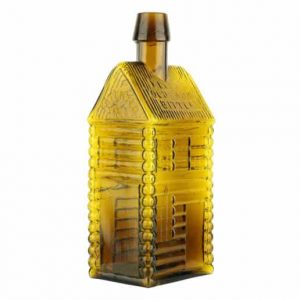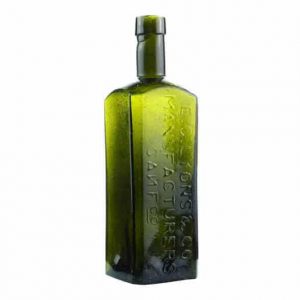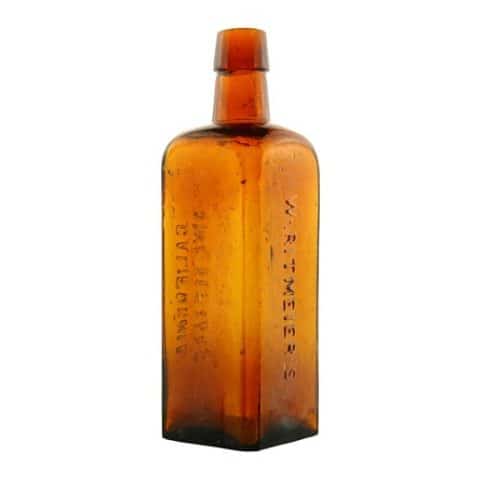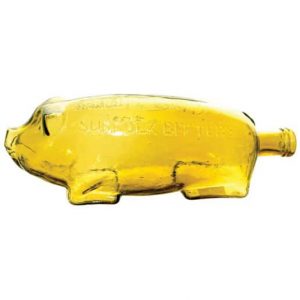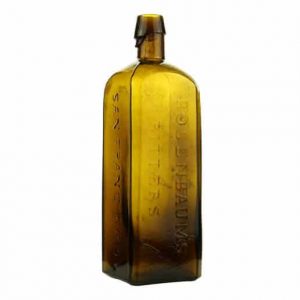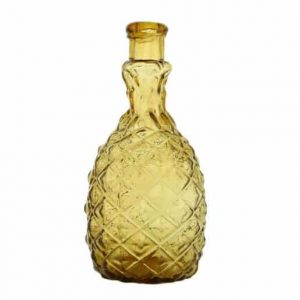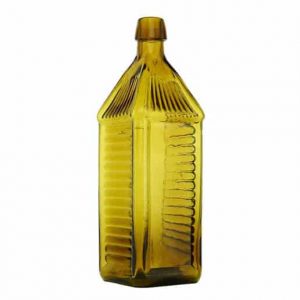Dr. Walkinshaw’s Curative Bitters Batavia N.Y.
Dr. Walkinshaw’s
Curative Bitters
Batavia N.Y.
W – 14
Walkinshaw, Hewitt & Co.
Batavia, Genesee County, New York
Amber Square
Provenance: Bob Jochums Collection
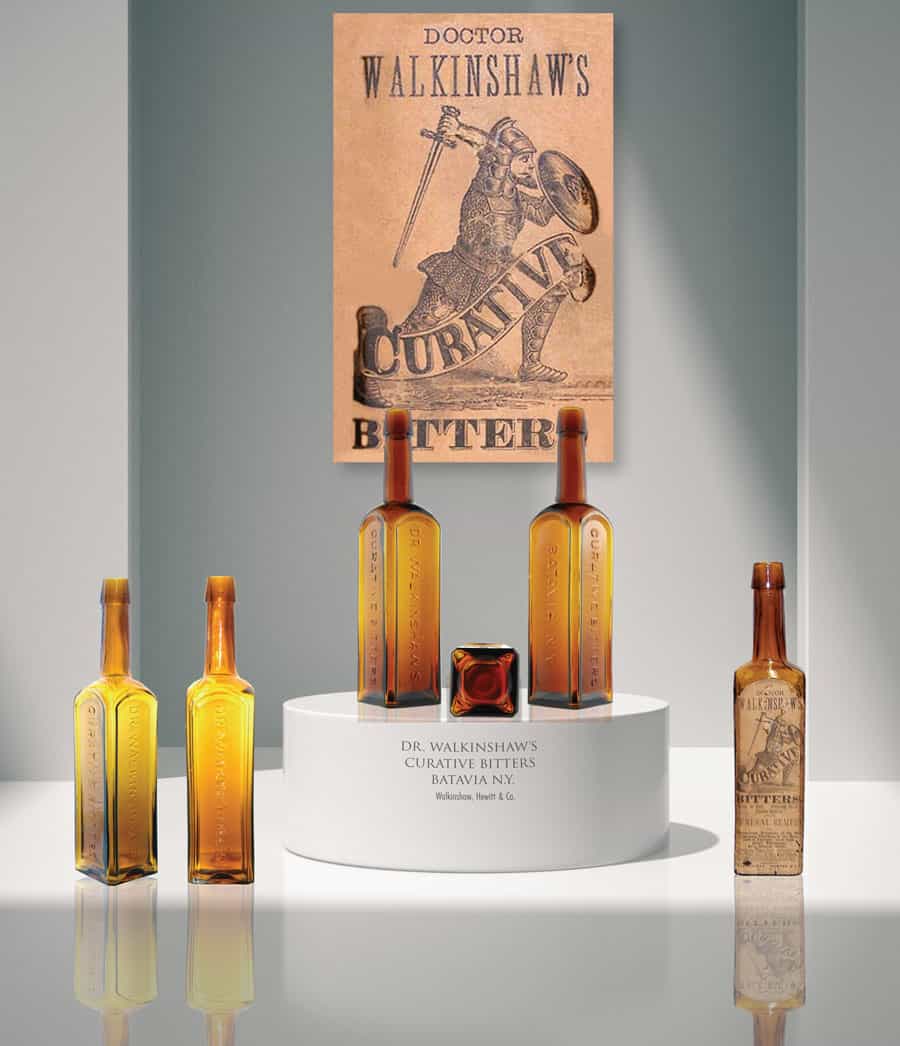
Our amber Dr. Walkinshaw’s Curative Bitters is a scarce square from Batavia, New York. As the word “Curative” is in the name, it is also collected by Cure’s collectors. Our museum example is 10 inches tall by 2 ¼ inches wide on each side. The bottle is in excellent condition and is ex Bill Agee and Larry Hicks collections.

When looking at the bottle sides, there are three tall inset and chamfered panels that contain sans serif embossed copy. The first panel, reading from shoulder to base is ‘DR. WALKINSHAW’S.’ There is a kick-up in the “R” of “Dr.” The second panel reads, ‘CURATIVE BITTERS,’ while the third panel reads ‘BATAVIA N.Y.’ The fourth panel is where the proprietor would have placed a paper label. A short graceful shoulder supports a tall neck with an applied long tapered collar. The base is smooth with a recessed rounded rectangle. The Ring/Ham/Meyer catalog listing is as follows:
W 14 DR. WALKINSHAW’S // CURATIVE BITTERS // BATAVIA N.Y. // f //
9 7/8 x 2 1/8 (5 1/8) 3/4
Square, Amber and Yellow-amber, LTC, Applied mouth, 3 sp, Scarce
Prepared by Walkinshaw, Hewitt & Co. Batavia, New York
James and Isabelle Pattison Walkinshaw were natives of Scotland who came to America, settling in Batavia, New York, in 1839. Batavia, located on Tonawanda Creek at the junction of two major Indian trails, was founded in 1801 by Joseph Ellicott, resident agent for the Holland Land Company.. Four years earlier, the Holland Land Company purchased 3.5 million acres, including the current site of Batavia, from Robert Morris, “Financier of the American Revolution,” who in turn had acquired the land from the State of Massachusetts. The Seneca Nation, with the exception of reservations existing still today, in exchange for a payment of $100,000, ceded its rights to this land in the 1797 Treaty of Big Tree.
James Walkinshaw was a successful baker who, for years, had a bakery at Exchange Place until he died in 1851. His first son, James M. Walkinshaw, was born on January 20, 1840, and would follow his father in the bakery trade. In 1869, with Lucius Baker, Walkinshaw purchased the bakery and cracker business of B. C. Page. He also bought Fellows Drug Store and moved the bakery sales room there. In 1874, Baker & Walkinshaw added a full line of drugs, medicines, and fancy toilet goods to their business interests. They secured a large trade and had a prescription department with competent pharmacists. Their place of business was 63 East Main Street.
A second son, Maxwell G. Walkinshaw, was born on October 28, 1848, and graduated from the Buffalo Medical College and Medical Department of the University of Michigan at Ann Arbor in 1870. Returning to Batavia, he would become a manufacturer of patent medicines working at the same 63 East Main St. address as his brother James.

Maxwell G. Walkinshaw and Henry Hewitt of Batavia, N.Y., filed an application on October 21, 1879, receiving label patent 2174. for “Dr. Walkinshaw’s Curative Bitters.” The eventual label would picture a bearded and fully armored soldier with a sword and shield battling an unseen adversary. Beneath the label trademark was “Doctor Walkinshaw’s Curative Bitters. Purifies the Blood, Invigorates the Liver. Promotes Digestion and is a General Remedy for Rheumatism, Eruptions of the Skin, Dyspepsia, Dizziness of the Head, Loss of Appetite, Liver Complaint, Biliousness, and General Debility. Directions Take a Tablespoonful before meal and one on retiring for the night. Prepared by Walkinshaw, Hewitt, and Co., Batavia, N.Y. Maxwell would presumably sell his bitters from his brother’s drug store.
Dr. M. G. Walkinshaw died at his home at Seaver Place on September 14, 1887. He was 38 years old. Baker & Walkinshaw dissolved on March 7, 1894. Baker would go on to the N.Y. State school. In 1897, J. M. Walkinshaw retired and operated a cigar and tobacco store on Jackson Street for a year. He would pass on February 8, 1909.
Primary Image: Dr. Walkinshaw’s Curative Bitters bottle imaged on location by Alan DeMaison, FOHBC Virtual Museum Midwest Studio.
Support Image: The second example of Dr. Walkinshaw’s Curative Bitters in a honey-yellow glass. Ferdinand Meyer V collection.
Support Image: Three labeled bitters from the Jack Stecher collection,
Support: Reference to Gazetteer and Biographical Record of Genesee County N. Y. 1788-1890. Edited by F. W. Beers.
Support: Reference to Dr. Walkinshaw’s Curative Bitters from Batavia, NY, Peachridgeglass.com, October 2012.
Join the FOHBC: The Virtual Museum is a project of the Federation of Historical Bottle Collectors (FOHBC). To become a member.




